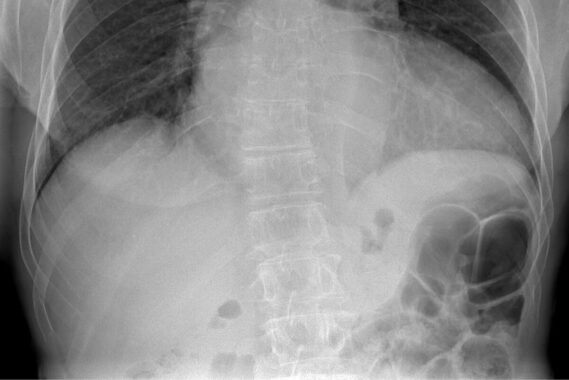Continuing our series exploring diagnoses that can easily be missed, Dr Charlotte Weaver describes a case of aortic stenosis that was initially overlooked
Clinical history
A 62-year-old female attended the practice following an episode of loss of consciousness. She reported feeling increasingly breathless and fatigued over the year prior to this episode, and she had received treatment for a bacterial chest infection on multiple occasions because of these symptoms.
A chest X-ray had been performed during this time, which demonstrated cardiomegaly, but this was not followed up at the time of the result.
The patient reported that at times her breathing had become so bad it made her extremely concerned, and she had debated attending A&E or calling 999 but did not want to have to wait for long periods in hospital for assessment.
Making the diagnosis
When the patient attended the GP surgery following her loss of consciousness, cardiovascular examination demonstrated a heart murmur and an urgent request for echo was therefore made.
The echo clinic diagnosed her with severe/critical aortic stenosis, and she was admitted immediately for an aortic valve replacement.
Learning points for GPs
This patient’s breathlessness was investigated for cardiac causes only after her loss of consciousness. Prior to this it had been attributed to a chest infection, as ‘that’s what it was last time’, according to the patient.
This reasoning may have been due to confirmation bias – the patient’s symptoms may have improved while she was taking antibiotics simply because she was less active while recovering from her ‘chest infection’ and so her symptoms were not triggered.
It is easy for such bias to affect our decisions, with the increasing pressures and complexity we are experiencing within primary care appointments.
Valvular heart disease may not be your first, or even second thought when considering symptoms of breathlessness, particularly in the absence of chest pain. More common conditions can include asthma, COPD, anaemia and heart failure. Even post-viral infection states can show similar symptoms, something that presents frequently in the consultation room since Covid. A respiratory examination, therefore, often gets performed, but a detailed cardiovascular exam can get overlooked.
A further point to consider in this patient is the presence of cardiomegaly on a chest X-ray. This a significant finding that warrants further investigation, as it indicates an enlargement of the heart that may not align with a simple diagnosis of a chest infection.
Patients can remain asymptomatic for several years despite having a significant degree of aortic stenosis. It is therefore important to consider both cardiovascular and respiratory causes of breathlessness, and undertake appropriate examination when symptoms such as dyspnoea are present, as critical aortic stenosis can lead to arrhythmia and death.
Key points
- Ensure a cardiovascular examination is undertaken for patients whose symptoms do not resolve following treatment for a chest infection.
- Consider requesting an echo for patients with persistent breathlessness.
- Cardiomegaly on an X-ray without explanation from a pre-existing condition should be investigated further.
- Stop, rethink, reassess – if a patient does not seem to improve with treatment, discuss with a colleague. A fresh pair of eyes with a different view even in those ‘simple cases’ can make the difference.
Dr Charlotte Weaver is a GP registrar in Shropshire












